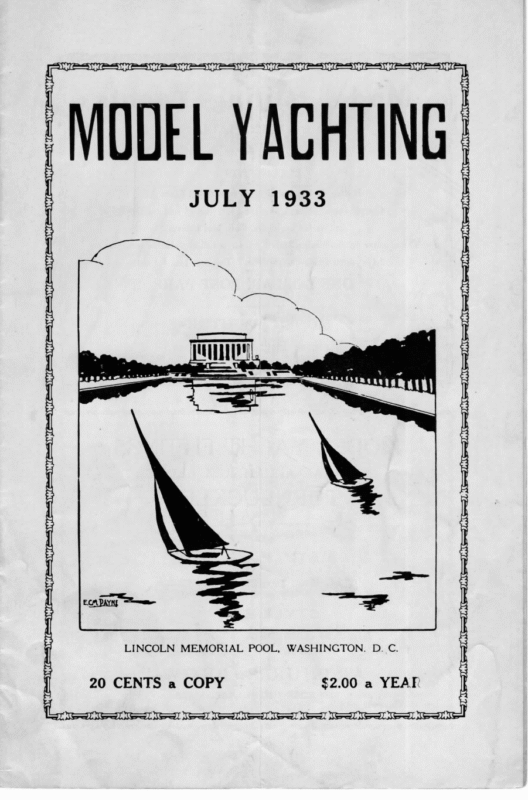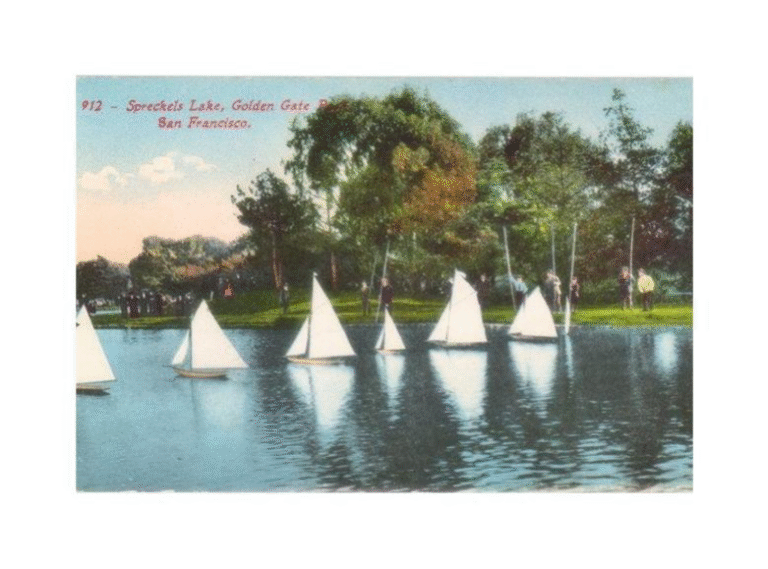
Right of Way
Section I. Definitions:
A yacht is CLOSE-HAULED when sailing by the wind as close as she can lay her course with advantage in working to windward.
A yacht with the WIND AFT is deemed to have the wind on the side opposite to that on which she carries her main boom.
Two yachts sailing the same (or nearly the same) course are said to be OVERLAPPING when either has no longer a free choice on which side of the other she shall pass, and the OVERLAP continues to exist so long as the leeward yacht by luffing, or the windward one, by bearing away, is in danger of fouling. Otherwise they are said to be CLEAR.
Of two yachts sailing the same course (or nearly the same) the one clear astern, if approaching the other so as to involve an overlap, is said to be the OVERTAKING YACHT, and she continues as such after an overlap has been established and until she has drawn clear.
A Yacht is LUFFING when she so alters her course as to sail more nearly into the wind.
A MARK is any object used to indicate the course. And every essential or ordinary above-water part of the mark counts as a mark for the purposes of the definition, but no part below water, or no object accidentally attached to the mark shall be considered as part of it.
Section II. Right of Way:
When one yacht approaches another so as to involve the risk of fouling, then one shall keep clear in accordance with the following:
ON DIFFERENT POINTS OF SAILING. The yacht sailing free shall have right of way over those on other tacks.
ON SAME POINT OF SAILING WITH WIND ON OPPOSITE SIDE. (a) When both are close-hauled with wind on opposite sides the yacht with the wind on the port side (port tack) shall keep clear. (b) When both are free, or both have the wind aft, but on opposite sides, the yacht with the wind on the port side shall keep clear.
CONVERGING, CLOSE-HAULED. When two yachts, both close-hauled on the sane tack, are converging by reason of the leeward yacht holding better wind and neither can claim the right of a yacht being overtaken, then the yacht to windward shall keep clear.
ALTERING COURSE. When one yacht is obliged to keep clear, the other (subject to the following clause) shall not so alter her course as to involve the risk of fouling.
OVERTAKING, LUFFING, and BEARING AWAY. An overtaking yacht shall keep clear of an overtaken yacht, as follows: PASSING TO WINDWARD. provided that the overtaken yacht makes her overlap on the side opposite to that on which the overtaken yacht carries her main boom, the latter may luff as she pleases to prevent the former passing her to windward, until the overtaken yacht is in such a position that her bowsprit or stem would strike the overtaking yacht abaft the main shrouds. At this point her right to luff from her course shall cease. PASSING TO LEEWARD; an overtaken yacht must never bear away to prevent another from passing her to leeward (the side on which she carries her main boom). The over taking vessel must not luff until she has drawn clear and ahead of the yacht she has overtaken. The provisions of this clause override those of the second clause (above) part b., the third clause (above) and the fifth clause (above).
RIGHTS ON NEW COURSE. A yacht shall be entitled to her rights on a new course: (a) When she has filled away, but she shall not have the right to alter her course so as to involve the risk of fouling another yacht which (owing to her position) cannot keep clear.
PASSING AND ROUNDING MARKS. If an overlap exists when yachts, without tacking, are about to pass a mark on the required side, then the outside yacht must give the other room enough to pass clear of the mark. A yacht shall not, however, be justified in attempting to estal]lish an overlap and thus force a passage after another yacht has altered her course for the purpose of rounding.
OBSTRUCTION TO SEA ROOM. When a yacht is approaching a shore, shoal, dock, rock, boat, or other dangerous obstruction and cannot go clear by altering her course without fouling another yacht, then the latter shall, upon being hailed by the former, immediately give room; and in case one is forced to tack or to bear away in order to give room then the other (hailing yacht) shall also tack or bear away as the case may be at or as near the same time and place as is possible without danger of fouling. But should the obstruction be a designated mark of the course, a yacht thus forcing another to tack under the provision of this rule shall be disqualified. (See Racing Rules, 8, section 2, where this is particularly referred to). A row boat, or sail boat (including another yacht racing) of which the yacht concerned is obliged to keep out of the way, ranks as an obstruction for the purposes of this clause.



